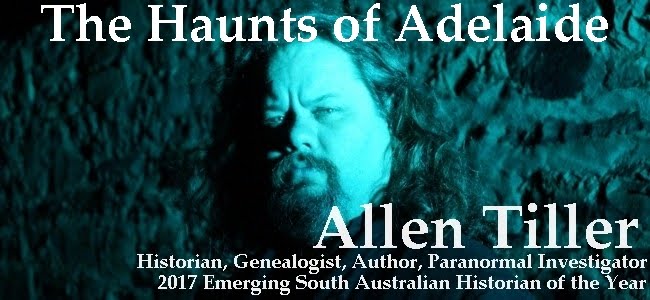The Bijou Hotel
141 Rundle Street (between Twin Street and
Pulteney Street – now part of Rundle Mall).
The Bijou
Hotel was situated where the Citi-Centre Arcade Shops can now be found (McDonald's,
Comic Book Store etc ) between Twin Street and Pulteney Street in Rundle Mall.
The hotel was established in 1859 as the “Adelaide
Restaurant or Nottinghamshire Arms Hotel” by J.H. Hubert, which offered
visitors;
“unprecedented low prices, comfortable beds and the best Wines,
Spirits, and Malt Liquors that can be procured.
Finest and largest PORT LINCOLN OYSTERS at Is. 6d. per dozen ;
middle size, 1s. per dozen ; small size, 6d. per dozen, bread and butter included.
A good DINNER for ONE SHILLING, with vegetable included”
A few years later the hotel was owned by
Thomas Upton, and in the following years its name changed numerous times. In
1964 it was known as the Alexandra Hotel, The Dolphin Hotel in 1871 and The
Savoy Hotel from 1896, until renamed as The Bijou Hotel in 1899 until it was demolished
in 1923.
The Bijou Hotel was listed as having seven
bedrooms and four parlours, and was extensively furnished and very well looked
after.
In
1904, The Bijou Hotel was a small part in a larger drama of events that occurred
on Rundle Street. At the time Rundle Street, not yet a mall, was the most
popular place for younger folks to hang out and catch up.
A little before 9pm on Saturday the 27th of February 1924, the Bijou Theatre caught fire and the metropolitan fire service was called to attend. This event only added drama to an already busy and shocked Rundle Street, within the previous hour Thomas Horton had shot his wife Florence just outside the Adelaide Arcade. Florence mortally wounded stumbled into the Arcade and died, while Thomas was on the run. Thomas was later caught and hung in Adelaide Gaol (More on Thomas Horton can be found in my book: The Haunts of Adelaide – History, Mystery and the Paranormal – published by Custom books ).
A little before 9pm on Saturday the 27th of February 1924, the Bijou Theatre caught fire and the metropolitan fire service was called to attend. This event only added drama to an already busy and shocked Rundle Street, within the previous hour Thomas Horton had shot his wife Florence just outside the Adelaide Arcade. Florence mortally wounded stumbled into the Arcade and died, while Thomas was on the run. Thomas was later caught and hung in Adelaide Gaol (More on Thomas Horton can be found in my book: The Haunts of Adelaide – History, Mystery and the Paranormal – published by Custom books ).
In 1911, The Bijou Hotel again made the
news, when in “The Chronicle” a local newspaper, it was reported a number of thieves
had broken into the hotel. The criminals climbed in through a window about 10pm
and stole a number of portmanteaus (a type of leather trunk like a
suitcase). The portmanteaus were pushed out onto a balcony and lowered to an
awaiting accomplice.
In 1924, the hotel, and adjoining buildings
were bought by a developer and demolished. New buildings were erected and were
known as the Thomas Martin buildings, in honour of Thomas Martin who bequeathed
two-thirds of his estate to the Adelaide Hospital, of which, one town acre
(which the hotel stood upon) was part of the bequest.










